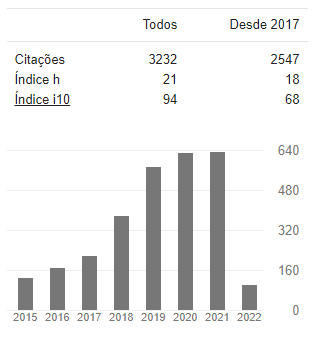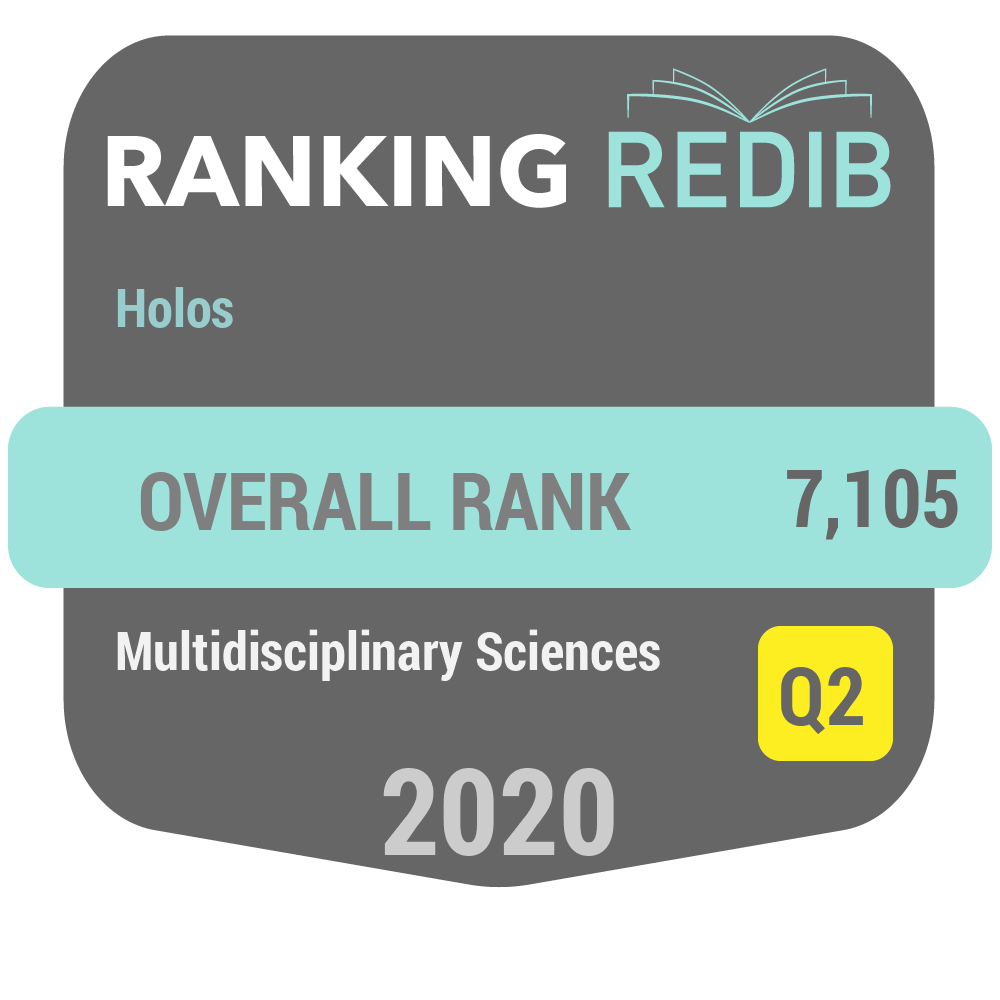Challenges in Understanding Sediment Flow in Lago Grande de Curuai in Central Amazon
A 2D Numerical Modeling Approach
Palavras-chave:
Floodplains, Computational Modeling, Sediment TransportResumo
Este estudo investigou a dinâmica sedimentar na planície de inundação do Rio Amazonas por meio de simulações com Delf3D. A vazão média pelo Lago Grande de Curuai foi de 5.000 m³/s, ultrapassando os valores observados em mais de 2%, com picos podendo exceder 20.000 m³/s. Padrões sazonais de concentração de sedimentos (fev a set) foram identificados. Apesar de defasagens nos picos simulados em relação às observações, as simulações ofereceram informações cruciais sobre a dinâmica de transporte de sedimentos na região, fundamentais para tomadas de decisões informadas e proteção ambiental.
Downloads
Referências
ALSDORF, D., HAN, S.-C., BATES, P., & MELACK, J. (2010). Seasonal water storage on the Amazon floodplain measured from satellites. Remote Sensing of Environment, 114(11), 2448–2456. doi:10.1016/j.rse.2010.05.020
BONNET, M. P., BARROUX, G., MARTINEZ, J. M., SEYLER, F., MOREIRA-TURCQ, P., COCHONNEAU, G., … SEYLER, P. (2008). Floodplain hydrology in an Amazon floodplain lake (Lago Grande de Curuaí). Journal of Hydrology, 349(1-2), 18–30. doi:10.1016/j.jhydrol.2007.10.055
BOURGOIN, L. M., BONNET, M.-P., MARTINEZ, J.-M., KOSUTH, P., COCHONNEAU, G., MOREIRA-TURCQ, P., … SEYLER, P. (2007). Temporal dynamics of water and sediment exchanges between the Curuaí floodplain and the Amazon River, Brazil. Journal of Hydrology, 335(1-2), 140–156. doi:10.1016/j.jhydrol.2006.11.023
BOURGOIN, L. M., MARTINEZ, J. M., GRELAUD, J., FILIZOLA, N., & BOAVENTURA G. R. (2005). The role of flood plains in the hydrology and sediment dynamics of the Amazon River, Brazil. IAHS Publication 291: 1–10.
BUARQUE, D., C., (2015). Simulação da geração e do transporte de sedimetnos em grandes bacias: estudo de caso do rio Madeira. Universidade Federal do Rio Grande do Sul, Porto Alegre, Tese (Doutorado em Recursos Hídricos e Saneamento Ambiental).
DELTARES. (2021). Simulation of multi-dimensional hydrodynamic flows and transport phenomena, including sediments. User Manual. Hydro-Morphodynamics. Version 3.15.
DIJKSTRA, Y. M., SCHUTTELAARS, H. M., SCHRAMKOWSKI, G., & BROUWER, R. L. (2019). Modelling the transition to high sediment concentrations as a response to channel deepening in the Ems River Estuary. Journal of Geophysical Research: Oceans. doi:10.1029/2018jc014367
DUNNE, T., MERTES, L. A. K., MEADE, R. H., RICHEY, J. E., & FORSBERG, B. R. (1998). Geological Society of America Bulletin, 110(4), 0450. doi:10.1130/0016-7606(1998)110<0450:eosbtf>2.3.co;2
DURÓ, G., CROSATO, A., & TASSI, P. (2016). Numerical study on river bar response to spatial variations of channel width. Advances in Water Resources, 93, 21–38. doi:10.1016/j.advwatres.2015.10.003
FAGUNDES, H. DE O., FAN, F. M., DIAS DE PAIVA, R. C., SIQUEIRA, V. A., BUARQUE, D. C., KORNOWSKI, L. W., … COLLISCHONN, W. (2020). Sediment flows in South America supported by daily hydrologic-hydrodynamic modeling. doi:10.1002/essoar.10503046.2
FASSONI-ANDRADE, A. C., & PAIVA, R. C. D. DE. (2019). Mapping spatial-temporal sediment dynamics of river-floodplains in the Amazon. Remote Sensing of Environment, 221, 94–107. doi:10.1016/j.rse.2018.10.038
Fassoni-Andrade, A. C., Paiva, R., Wongchuig, S., Barbosa, C., and Durand, F.: Expressive fluxes over Amazon floodplain units revealed by high resolution 2D modelling, EGU General Assembly 2023, Vienna, Austria, 24–28 Apr 2023, EGU23-439, https://doi.org/10.5194/egusphere-egu23-439, 2023
FLORES, R. P., RIJNSBURGER, S., HORNER-DEVINE, A. R., SOUZA, A. J., & PIETRZAK, J. D. (2017). The impact of storms and stratification on sediment transport in the Rhine region of freshwater influence. Journal of Geophysical Research: Oceans, 122(5), 4456–4477. doi:10.1002/2016jc012362
FÖEGER, L., B., (2019). Modelagem Hidrossedimentológica de Grandes Bacias com Propagação Inercial de Vazão: estudo de caso da baica do rio Madeira. Federal University of Espirito Santo.
GIBBS, R. J. (1967). Amazon River: Environmental Factors That Control Its Dissolved and Suspended Load. Science, 156(3783), 1734–1737. doi:10.1126/science.156.3783.1734
HU, K., DING, P., WANG, Z., & YANG, S. (2009). A 2D/3D hydrodynamic and sediment transport model for the Yangtze Estuary, China. Journal of Marine Systems, 77(1-2), 114–136. doi:10.1016/j.jmarsys.2008.11.014
IRION, G., DUNNE, W. J., & DE MELLO, J. A. S. N. (1997). The Large Central Amazonian River Floodplains Near Manaus: Geological, Climatological, Hydrological and Geomorphological Aspects. The Central Amazon Floodplain, 23–46. doi:10.1007/978-3-662-03416-3_2
JAVERNICK, L., REDOLFI, M., & BERTOLDI, W. (2018). Evaluation of a numerical model’s ability to predict bed load transport observed in braided river experiments. Advances in Water Resources, 115, 207–218. doi:10.1016/j.advwatres.2018.03.012
JUNK, W. J., PIEDADE, M. T. F., SCHÖNGART, J., COHN-HAFT, M., ADENEY, J. M., & WITTMANN, F. (2011). A Classification of Major Naturally-Occurring Amazonian Lowland Wetlands. Wetlands, 31(4), 623–640. doi:10.1007/s13157-011-0190-7
JUNK, W.J., ED. (1997) The Central Amazon Floodplain. Berlin, Germany: Springer.
KASPRAK, A., WHEATON, J., M., & HAFEN, K. (2015) A simplified morphodynamic model for gravel-bed rivers. Proceedings of SEDHYD 2015 (3rd JFIC). April 2015, 2015.
LUIJENDIJK, A.P. (2001). Validation, calibration and evaluation of Delft3D-FLOW model with ferry measurements. Civil Engineering and Geosciences. Student theses.
MELACK, J. M., HESS, L. L., & SIPPEL, S. (1994). Remote sensing of lakes and floodplains in the Amazon basin. Remote Sensing Reviews, 10(1-3), 127–142. doi:10.1080/02757259409532240
MERTES, L., SMITH, M., & ADAMS, J. (1993). Estimating suspended sediment concentrations in surface waters of the Amazon River wetlands from Landsat images. Remote Sensing of Environment, 43(3), 281–301. doi:10.1016/0034-4257(93)90071-5
MOLINIER, M., GUYOT, J., CALLÈDE, J., GUIMARAES, V., & OLIVEIRA, E., FILIZOLA N., JR. (1997). Hydrologie du bassin amazonien.
MOLINIER, M., GUYOT, J., OLIVEIRA, E., GUIMARAES, V. (1996). Les régimes hydrologiques de l'Amazone et de ses affluents.
MOREIRA-TURCQ, P., BONNET, M.-P., AMORIM, M., BERNARDES, M., LAGANE, C., MAURICE, L., … SEYLER, P. (2013). Seasonal variability in concentration, composition, age, and fluxes of particulate organic carbon exchanged between the floodplain and Amazon River. Global Biogeochemical Cycles, 27(1), 119–130. doi:10.1002/gbc.20022
MOREIRA-TURCQ, P., BONNET, M.-P., AMORIM, M., BERNARDES, M., LAGANE, C., MAURICE, L., … SEYLER, P. (2013). Seasonal variability in concentration, composition, age, and fluxes of particulate organic carbon exchanged between the floodplain and Amazon River. Global Biogeochemical Cycles, 27(1), 119–130. doi:10.1002/gbc.20022
MOREIRA-TURCQ, P., SEYLER, P., GUYOT, J. L., & ETCHEBER, H. (2003). Exportation of organic carbon from the Amazon River and its main tributaries. Hydrological Processes, 17(7), 1329–1344. doi:10.1002/hyp.1287
MORIASI, D. N., ARNOLD, J. G., VAN LIEW, M. W., BINGNER, R. L., HARMEL, R. D., & VEITH, T. L. (2007). Model Evaluation Guidelines for Systematic Quantification of Accuracy in Watershed Simulations. Transactions of the ASABE, 50(3), 885–900. doi:10.13031/2013.23153
NEILL, C., ELSENBEER, H., KRUSCHE, A. V., LEHMANN, J., MARKEWITZ, D., & DE O. FIGUEIREDO, R. (2006). Hydrological and biogeochemical processes in a changing Amazon: results from small watershed studies and the large-scale biosphere-atmosphere experiment. Hydrological Processes, 20(12), 2467–2476. doi:10.1002/hyp.6210
PAARLBERG, A., GUERRERO, M., HUTHOFF, F., & RE, M. (2015). Optimizing Dredge-and-Dump Activities for River Navigability Using a Hydro-Morphodynamic Model. Water, 7(12), 3943–3962. doi:10.3390/w7073943
RAHBANI, M. (2015). A comparison between the suspended sediment concentrations derived from DELFT3D model and collected using transmissometer – a case study in tidally dominated area of Dithmarschen Bight. Oceanologia, 57(1), 44–49. doi:10.1016/j.oceano.2014.06.002
Richey, J. E., Mertes, L. A. K., Dunne, T., Victoria, R. L., Forsberg, B. R., Tancredi, A. C. N. S., & Oliveira, E. (1989). Sources and routing of the Amazon River Flood Wave. Global Biogeochemical Cycles, 3(3), 191–204. doi:10.1029/gb003i003p00191
RUDORFF, C. M., MELACK, J. M., & BATES, P. D. (2014a). Flooding dynamics on the lower Amazon floodplain: 1. Hydraulic controls on water elevation, inundation extent, and river-floodplain discharge. Water Resources Research, 50(1), 619–634. doi:10.1002/2013wr014091
SIOLI, H. (1951). Sobre a sedimentação na várzea do Baixo Amazonas. EMBRAPA, Repositório Institucional. Boletim Técnico. IAN, Belém, PA, n. 24, p. 45-65
SIQUEIRA, V. A., PAIVA, R. C. D., FLEISCHMANN, A. S., FAN, F. M., RUHOFF, A. L., PONTES, P. R. M., … COLLISCHONN, W. (2018). Toward continental hydrologic–hydrodynamic modeling in South America. Hydrology and Earth System Sciences, 22(9), 4815–4842. doi:10.5194/hess-22-4815-2018
VAN MAREN, D. S., VAN KESSEL, T., CRONIN, K., & SITTONI, L. (2015). The impact of channel deepening and dredging on estuarine sediment concentration. Continental Shelf Research, 95, 1–14. doi:10.1016/j.csr.2014.12.010
VAN RIJN, L. C. (1993). Principles of Sediment Transport in Rivers, Estuaries and Coastal Seas. Aqua Publications, The Netherlands.
VILLAR, E, R., MARTINEZ, J.-M., LE TEXIER, M., GUYOT, J.-L., FRAIZY, P., MENESES, P. R., & OLIVEIRA, E. de. (2013). A study of sediment transport in the Madeira River, Brazil, using MODIS remote-sensing images. Journal of South American Earth Sciences, 44, 45–54. doi:10.1016/j.jsames.2012.11.006
VILLAR, E, R., MARTINEZ, J.-M., LE TEXIER, M., GUYOT, J.-L., FRAIZY, P., MENESES, P. R., & OLIVEIRA, E. DE. (2013). A study of sediment transport in the Madeira River, Brazil, using MODIS remote-sensing images. Journal of South American Earth Sciences, 44, 45–54. doi:10.1016/j.jsames.2012.11.006
WEI, X., KUMAR, M., & SCHUTTELAARS, H. M. (2018). Three-Dimensional Sediment Dynamics in Well-Mixed Estuaries: Importance of the Internally Generated Overtide, Spatial Settling Lag, and Gravitational Circulation. Journal of Geophysical Research: Oceans, 123(2), 1062–1090. doi:10.1002/2017jc012857
WIDDOWS, J., FRIEND, P. L., BALE, A. J., BRINSLEY, M. D., POPE, N. D., & THOMPSON, C. E. L. (2007). Inter-comparison between five devices for determining erodability of intertidal sediments. Continental Shelf Research, 27(8), 1174–1189. doi:10.1016/j.csr.2005.10.006
WILLIAMS, R. D., BRASINGTON, J., & HICKS, D. M. (2016a). Numerical Modelling of Braided River Morphodynamics: Review and Future Challenges. Geography Compass, 10(3), 102–127. doi:10.1111/gec3.12260
WILLIAMS, R. D., BRASINGTON, J., HICKS, M., MEASURES, R., RENNIE, C. D., & VERICAT, D. (2013). Hydraulic validation of two-dimensional simulations of braided river flow with spatially continuous aDcp data. Water Resources Research, 49(9), 5183–5205. doi:10.1002/wrcr.20391
WILLIAMS, R. D., MEASURES, R., HICKS, D. M., & BRASINGTON, J. (2016b). Assessment of a numerical model to reproduce event-scale erosion and deposition distributions in a braided river. Water Resources Research, 52(8), 6621–6642. doi:10.1002/2015wr018491
YEPEZ, S., LARAQUE, A., MARTINEZ, J.-M., DE SA, J., CARRERA, J. M., CASTELLANOS, B., … LOPEZ, J. L. (2018). Retrieval of suspended sediment concentrations using Landsat-8 OLI satellite images in the Orinoco River (Venezuela). Comptes Rendus Geoscience, 350(1-2), 20–30. doi:10.1016/j.crte.2017.08.004
YOSSEF., M. (2016). Morphological model of the River Rhine branches in The Netherlands - From the concept to the operational model.
Downloads
Publicado
Como Citar
Edição
Seção
Licença

Este trabalho está licenciado sob uma licença Creative Commons Attribution-NonCommercial-NoDerivatives 4.0 International License.





































